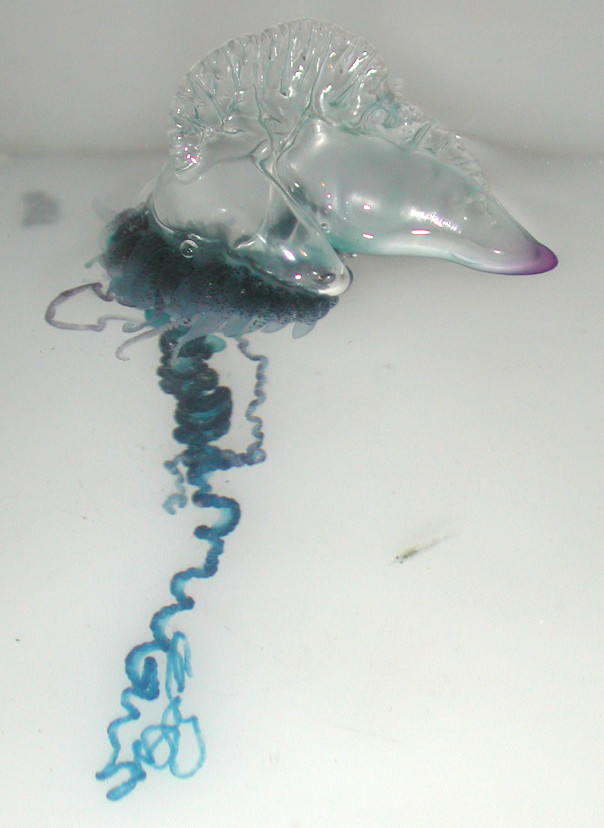
Despite its appearance, the Portuguese Man o’ War is not a jellyfish.
It is technically known as a siphonophore, and although it might appear to be one single organism, a man o’ war is actually a colony of four smaller individual organisms known as zooids, which could not survive outside of the colony.
The most noticeable feature of a man o’ war is the “sail” or pneumatophore, a gas-filled balloon filled with carbon monoxide generated by the man o’ war’s gas gland, and nitrogen, oxygen and argon from the atmosphere. The sail allows the man o’ war to trail it’s tentacles through surface water, allowing it to feed, and can be deflated in case of attack from the surface, allowing the man o’ war to escape by submerging itself temporarily.

The sail is the clear “bag” at the top of the image, and the dactylzooids are the bluish tentacles below.
The remainder of a man o’ war is composed of three groups of zooids: the gastrozooids, the gonozooids and the dactylzooids. The dactylzooids make up the familiar tentacles, up to ten metres long, that trail through the water and which are covered in venom-filled nematocysts that are responsible for the tentacles’ highly painful stinging effect. The tentacles capture and guide food to the gastrozooids, which ingest and digest it. The gonozooids are responsible for reproduction.
(I was pleased to stumble upon your website, first “The Composition of Earth’s Atmosphere With Elevation”, and look forward to exploring your other posts. Thank you!)
Doesn’t “organism” imply a reproducing entity? Your last sentence, “The gonozooids are responsible for reproduction” suggests that they reproduce all four of the zooids that you describe, which in my lexicon would make all four part of a single organism.